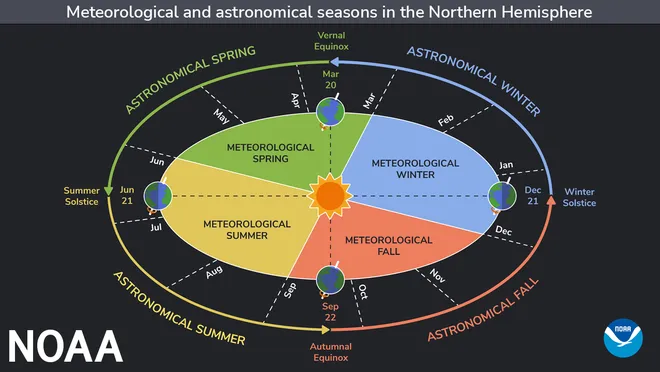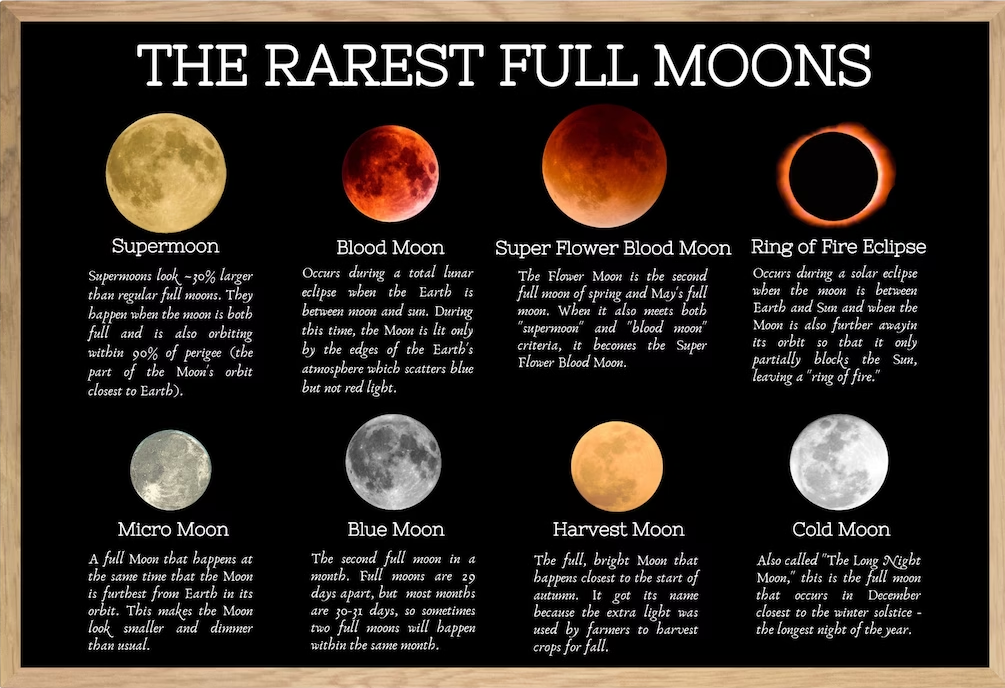Important Facts For Prelims
Blue Moon
- 22 Aug 2024
- 4 min read
Why in News?
Recently, the phenomenon of the "blue moon" occurred in August 2024. This has prompted discussions regarding its origins, significance, and the diverse interpretations associated with it.
What is the Blue Moon?
- About: A blue moon is the second full moon that occurs within a single calendar month.
- The next Blue Moon will occur on 31st May 2026.
- Types: There are 2 types of Blue Moons, neither of which involve the moon's colour.
- Seasonal Blue Moon: A Seasonal Blue Moon happens when there are 4 full moons in a single astronomical season- spring, summer, autumn (fall), or winter, rather than the usual 3. The third full moon in this series is referred to as a "Blue Moon."
- Typically, each season spans about 3 months, allowing for 3 full moons. However, due to the lunar cycle's duration (about 29.5 days), occasionally, 4 full moons can occur within one season.
- When this happens, the third of these four full moons is called a "Seasonal Blue Moon."
- Typically, each season spans about 3 months, allowing for 3 full moons. However, due to the lunar cycle's duration (about 29.5 days), occasionally, 4 full moons can occur within one season.
- Seasonal Blue Moon: A Seasonal Blue Moon happens when there are 4 full moons in a single astronomical season- spring, summer, autumn (fall), or winter, rather than the usual 3. The third full moon in this series is referred to as a "Blue Moon."
- Monthly Blue Moon: It is the second full moon in a single calendar month.
- Since full moons typically happen once a month, having two in the same month is rare, making the second one a "Blue Moon”.
- The upcoming Blue Moon on 31st May 2026, will be a monthly Blue Moon.
- Formation:
- The moon phases complete a cycle in 29.5 days, resulting in 12 lunar cycles over 354 days.
- Consequently, approximately every 2.5 to 3 years, a 13th full moon occurs within a calendar year, known as a Blue Moon, which does not follow the standard naming conventions.
- Since February has only 28 days in a regular year and 29 days in a leap year, it can never have a Blue Moon.
- The moon phases complete a cycle in 29.5 days, resulting in 12 lunar cycles over 354 days.
Instances When Moon Actually Appeared Blue Due to Atmospheric Conditions
- Eruption of Mt. Tambora in Indonesia (1815): It was the most powerful eruption following the prior eruption of Mayon volcano in the Philippines.
- This, along with other climatic factors, resulted in a significant global temperature drop of 0.4-0.7º C in 1816, leading to the phenomenon known as the 'year without summer.'
- The volcanic ash and particles in the atmosphere during this time may have also caused the moon to appear blue.
- Eruption of the Indonesian volcano Krakatoa (1883): It produced ash that reached an altitude of 80 kilometers. The minute ash particles, approximately one micron in size, filtered the light and caused the moon to appear in a noticeable blue-green hue.
- 1983 El Chichon eruption in Mexico and those of Mt. St. Helens in 1980 and Mount Pinatubo in 1991, have also been associated with the phenomenon of blue moons.
UPSC Civil Services Examination Previous Year Question (PYQ)
Prelims
Q. Recently, scientists observed the merger of giant ‘blackholes’ billions of light-years away from the Earth. What is the significance of this observation? (2019)
(a) ‘Higgs boson particles’ were detected.
(b) ‘Gravitational waves’ were detected.
(c) Possibility of inter-galactic space travel through ‘wormhole’ was confirmed.
(d) It enabled the scientists to understand ‘singularity’.
Ans: (b)






